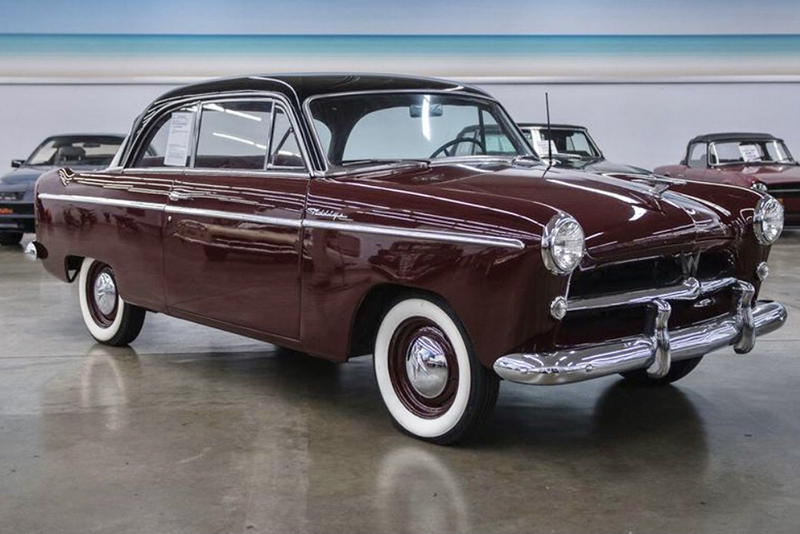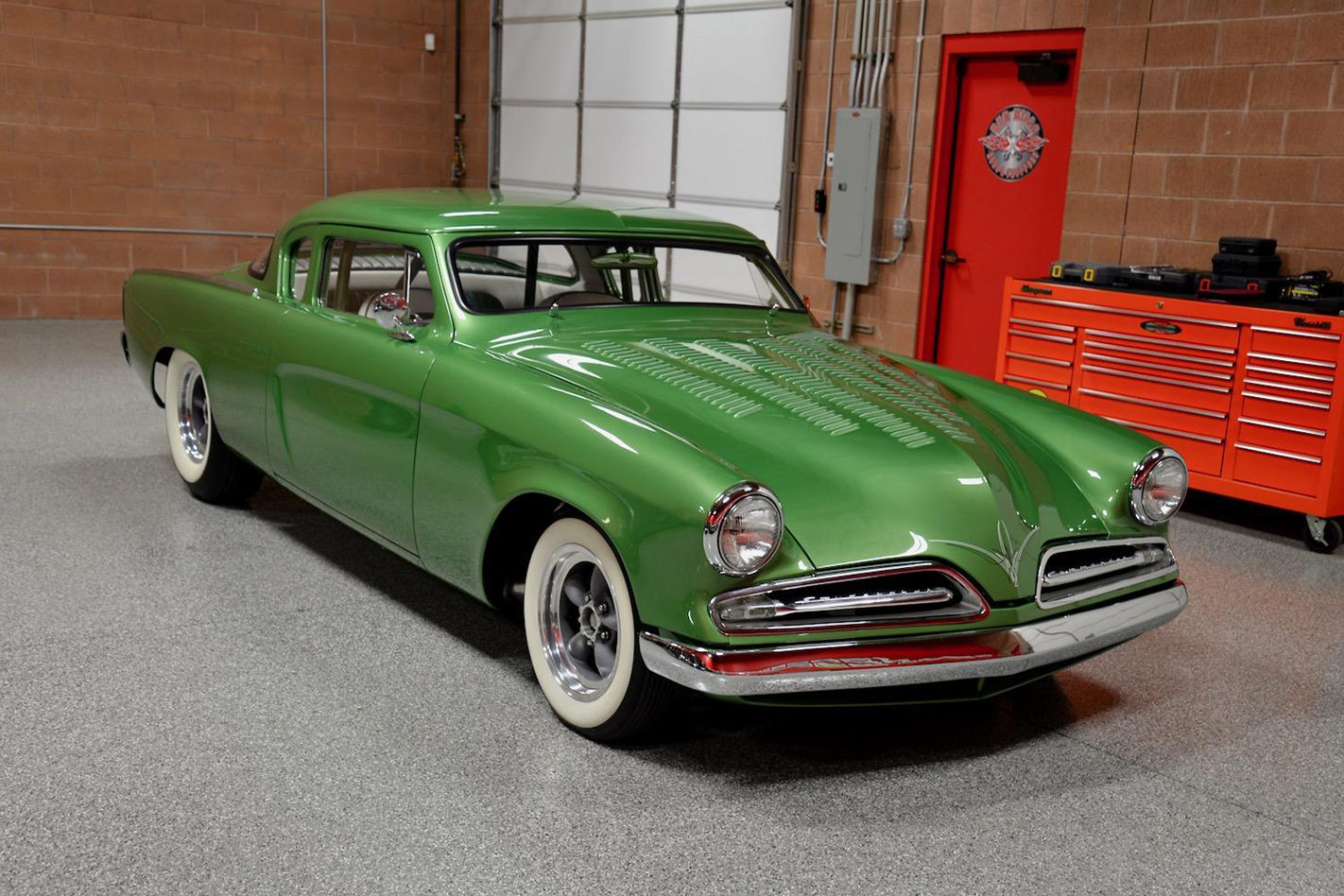
History
- Super rare, top-of-the-line 1953 Willys Aero Eagle two-door hardtop.
- Perhaps the finest surviving example on the planet! When was the last time you saw a Willys car??? Much less a top of the line model in this condition?
- Everything about this car is first-rate. It gets thumbs up wherever it goes
- Totally rust free car.
- The engine compartment and the undercarriage are clean.
- The interior is near perfect and the exterior paint and chrome is high quality.
- The engine performs masterfully and is a real pleasure to drive.
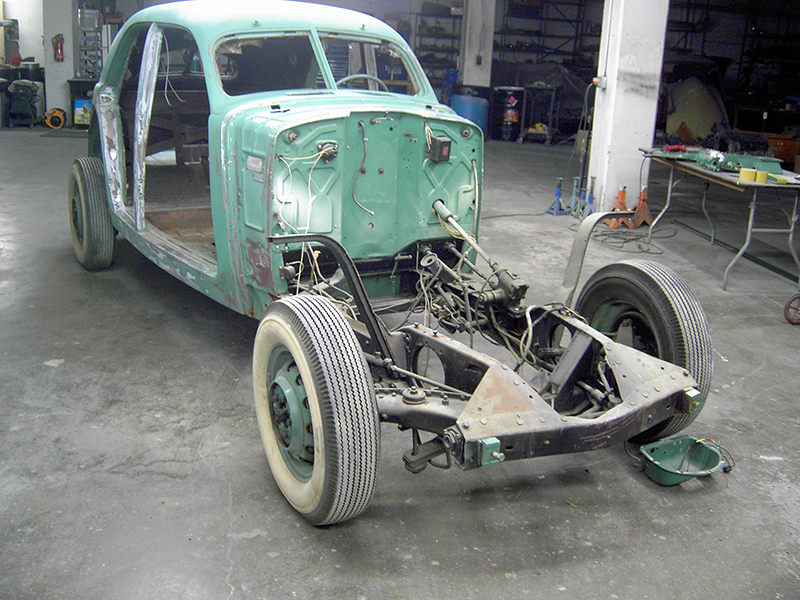
1936 Cord Westchester Beverly Restoration
We found this Cord’s engine condition to be misrepresented and it needed a complete overhaul. There was also a considerable amount of rust that needed to be repaired before refinishing, but is now completely restored and running.
Iconic Studebaker Commander
One of the most iconic Studebaker Commanders to emerge recently must be this custom 1953 Salt Flats Racer tribute car. It took 10 years and more than 12,000 hours to complete this exquisite, one-off vehicle. It came to the Dayton Auto and Memorabilia Museum from famed 70’s body builder, Mike Katz, and his personal collection of noteworthy cars.
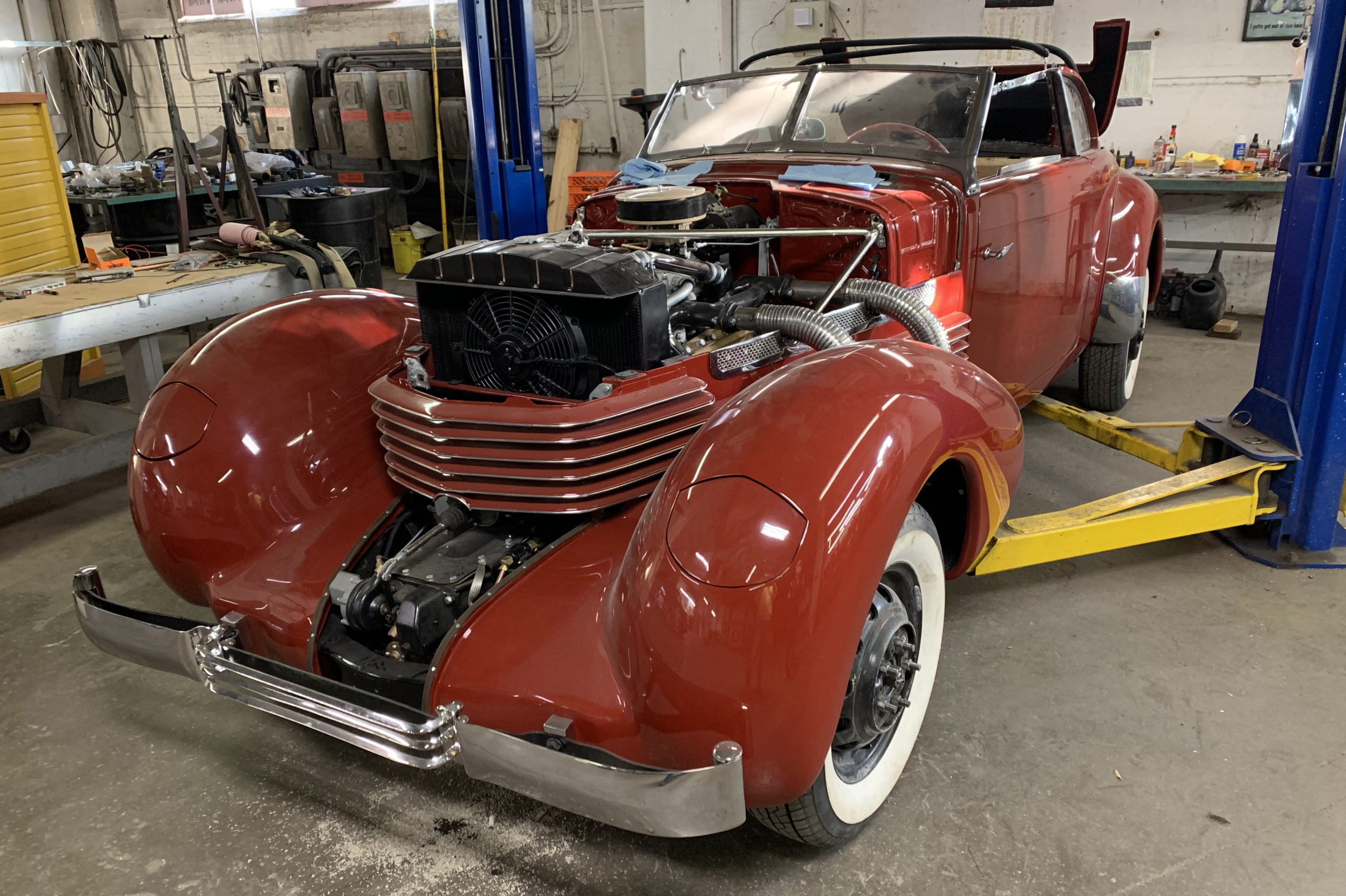
1936 Cord 810 Phaeton Restoration
It appears this Phaeton was built in 1936 as an 810 and was used to develop Cord’s supercharger. This page will be updated as new research surfaces and progress is made in the restoration.
Handbuilt Cords – by Bill Bicknell
The evolution of the 810/812 Cord can be described in various stages from conception, to prototype, to handbuilt cars, and then finally to production. This article will cover handbuilt cars in detail while giving additional information on other stages as appropriate.
Power and Presence of the Cord
The Cord 810, and later Cord 812, was a luxury automobile with lush interiors, and many world and industry firsts. For the most part, the Cord could be considered a coach-built automobile, as virtually every vehicle had customer tailored paint and interiors.
Gordon Miller Buehrig was an automobile designer. Born in Mason City, Illinois, he had early design experience with Packard, General Motors and Stutz. In 1929, he was responsible for designing the bodies of the Stutz Black Hawks entered at Le Mans.
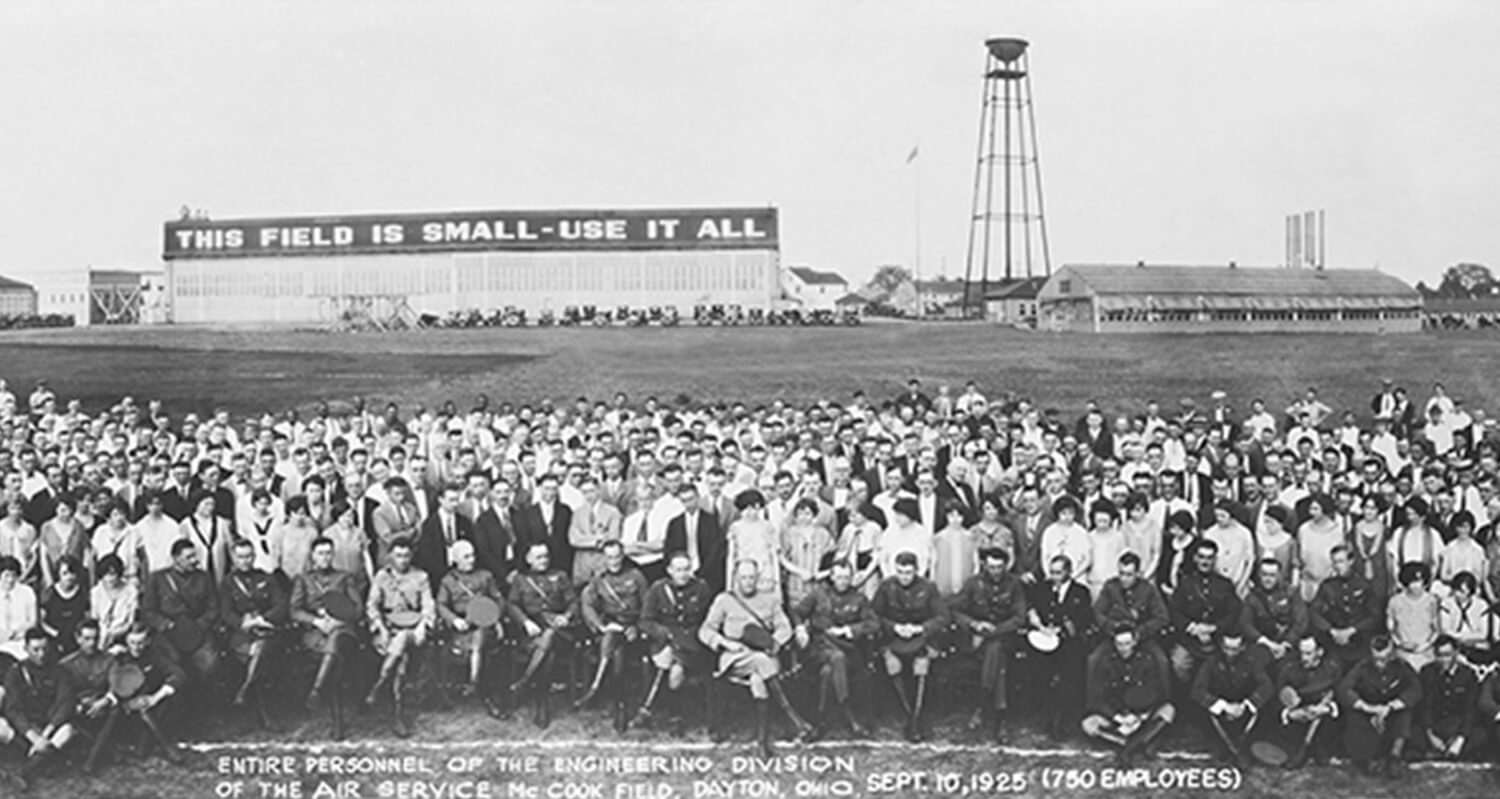
Located on the historic McCook Field
The Dayton Auto & Memorabilia Museum building enjoys some vintage significance, once belonging to McCook Field, an early aviation experimentation and innovation hub.
From Huffman Prairie To The Moon
The History of Wright-Patterson Air force Base
World’s First Flying Field
An article from “The Wright Stories” about McCook Field and it’s history.
A Look at the Inland Manufacturing Division of the GM Corporation
 One can find a few histories of Inland, but they are mostly about the early years and the products, and they don’t have much content about the people side of the business. Inland was unique in many ways, both within General Motors and compared to other manufacturing companies. The people were very entrepreneurial and were always looking for a new product to make or an improvement in the method used to make an existing product. Most importantly, it was a great place to work. Inland was very egalitarian. From the General Manager to the guy on the Press Line, the people felt that their particular job was important and that they were making a difference, and that if they had an issue or an idea, it would be heard. Inland doesn’t exist anymore. Many pieces were sold off, some moved, and some abandoned. The buildings along Abbey Avenue in Dayton, Ohio (except those of the Wright Airplane Company) have been torn down. Inland may be gone, but it should not be forgotten.
One can find a few histories of Inland, but they are mostly about the early years and the products, and they don’t have much content about the people side of the business. Inland was unique in many ways, both within General Motors and compared to other manufacturing companies. The people were very entrepreneurial and were always looking for a new product to make or an improvement in the method used to make an existing product. Most importantly, it was a great place to work. Inland was very egalitarian. From the General Manager to the guy on the Press Line, the people felt that their particular job was important and that they were making a difference, and that if they had an issue or an idea, it would be heard. Inland doesn’t exist anymore. Many pieces were sold off, some moved, and some abandoned. The buildings along Abbey Avenue in Dayton, Ohio (except those of the Wright Airplane Company) have been torn down. Inland may be gone, but it should not be forgotten.
Inland M1 Carbine; Part 1
During World War II, Inland shifted some of their production to manufacturing the M1 Carbine, delivering 2.6 million of the light rifles to the Allies by the war’s end. Watch an introductory video on the M1 Carbine, by Hickok45 here.
Inland M1 Carbine; Part 2
Continue watching the introductory video on the M1 Carbine, by Hickok45.
The Inland M1 Carbine Today
After GM abandoned the Inland trademark, a new company adopted the name and restarted production of the M1 Carbine. An introductory video by Gun Stock Reviews can be viewed here.
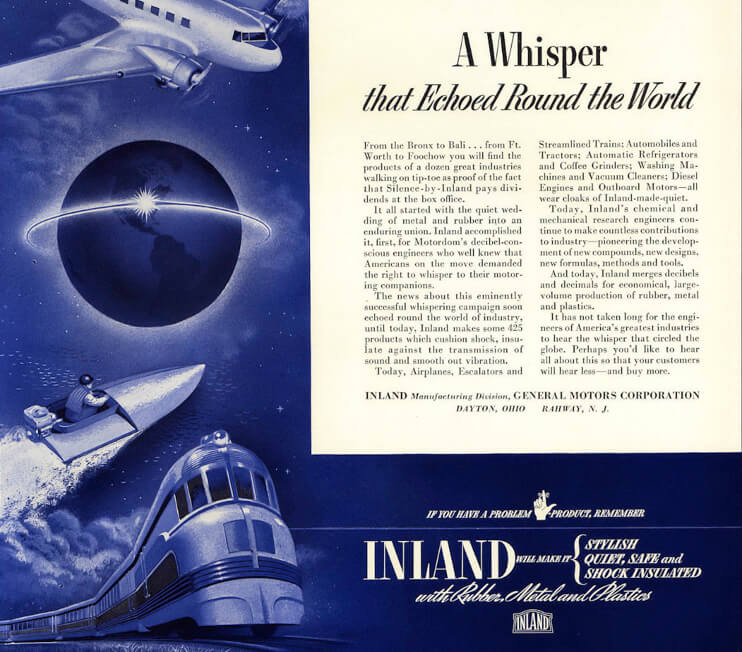

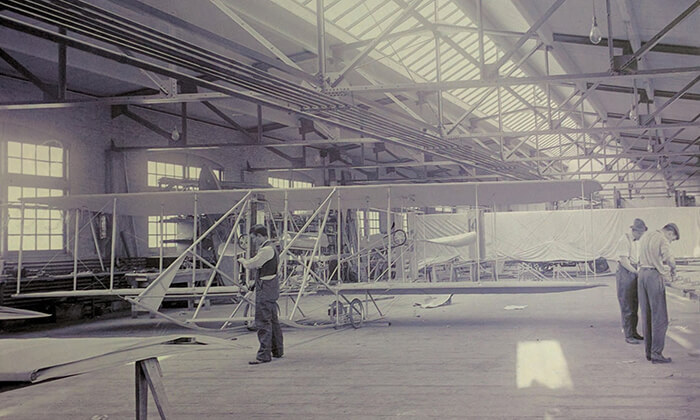
The Oldest Airplane Factory in the World
On the west side of Dayton, Ohio, a group of old white buildings topped with arched parapets sits in a cleared lot just off U.S. 35. For nearly 85 years these buildings produced everything from firearms to auto parts. But what makes them special was their function during the thirteen years prior, as the first airplane factory in the United States.
Errett Lobban Cord
Cord’s story is short but dense. Savvy young businessman Errett Lobban Cord effectively bought the struggling Auburn Automobile Company (AAC) in 1925. Earlier that year, Harry Miller’s Junior 8 Special amazed the automotive world by taking second place in the Indianapolis 500. It was the first front-wheel-drive car to compete in the famous race. In 1927 — having recently taken over Duesenberg, the other great American racing name of the day — Cord hired Miller to help develop America’s first front-wheel-drive production car. The result was the low-slung 1929-1932 L-29, the first vehicle from Mr. Cord’s namesake brand. Unfortunately, the Depression stifled sales of AAC’s flashy midlevel entrant.




